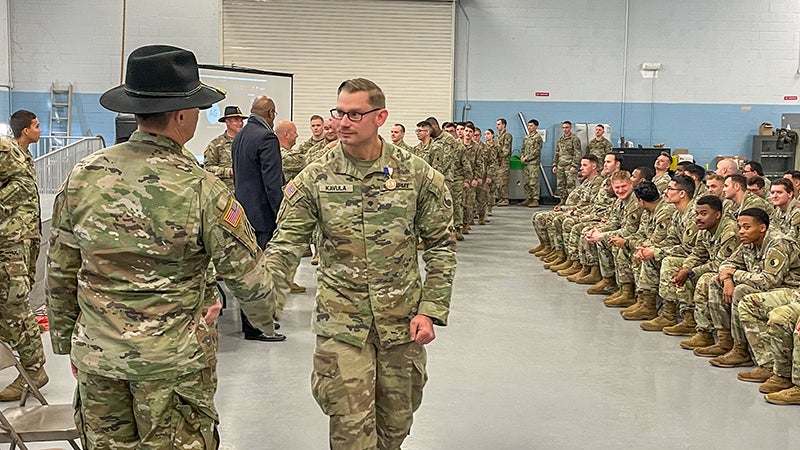WAR! Secessionist states fire on Fort Sumter
Published 9:03 pm Monday, April 11, 2011

A color lithograph by Currier & Ives depicts the bombardment of Fort Sumter in the harbor of Charleston, S.C.
One hundred and fifty years ago today, secessionist forces fired on a United States fort guarding the harbor of Charleston, S.C., starting a long, bloody war between the states that would claim the lives of more than 600,000 fighting men and those of untold numbers of civilians.
The conflict had been brewing for some time as southern states bristled at the increasingly strident calls for the end of the institution of slavery.
When Abraham Lincoln, a Republican who had campaigned on an anti-slavery platform, was elected the 16th president of the United States in November 1860, things reached a boiling point in the South.
South Carolina, which had threatened to withdraw from the Union if Lincoln was elected, responded to the election on Dec. 20 by announcing its secession and was followed by Mississippi, Florida, Alabama, Georgia, Louisiana and Texas in the action by Feb. 1, 1861.
The Confederate States of America was born, and Mississippi’s Jefferson Davis was elected its president.
In his inaugural address, Lincoln pledged not to end the practice of slavery where it existed in the nation, but he also stated that it was his duty to maintain the Union.
But the Confederacy was not satisfied with the new president’s position.
Rebel forces quickly moved to seize U.S. forts and their arsenals that were located within the seceding states. In all, they took about 30 forts and 3,000 guns with little opposition from the federal government, even in North Carolina, which had not yet voted to secede.
South Carolina had demanded that Fort Sumter be turned over to the newly independent state, but the U.S. government refused. It attempted to resupply forces there on Jan. 9, but the resupply ship “Star of the West” was driven back by shore batteries.
On April 6, Lincoln notified the Confederacy that he would be sending food to the troops garrisoned within the fort. The Confederate Congress, which met in Montgomery, Ala., had decided in February, though, that all U.S. forts within the newly independent territory must be taken “either by negotiation or force.”
And so the battle lines were drawn for the engagement that would spark the conflagration that was to become known as the American Civil War.
Having seen what was brewing around him, Maj. Robert Anderson, who was in charge of the forts protecting Charleston harbor, had abandoned as indefensible Fort Moultrie and had moved himself and 128 men into Fort Sumter.
Southern volunteers poured into Charleston and took over the remaining forts, as well as an arsenal.
With the president’s promise of a resupply mission and intelligence suggesting that a well-armed fleet was sailing south toward Charleston, Confederate forces demanded the immediate surrender of Fort Sumter.
Anderson demurred, saying he would surrender the fort by April 15 if he had not received help from his government by then.
He was given one hour to decide his course of action, and on April 12 at 4:20 a.m., the Confederate guns surrounding the fort opened fire.
The first shots were mortar rounds fired from Sullivan’s Island. They were followed by cannon fire from Fort Moultrie, Cumming’s Point and the Floating Battery. Soon, 50 guns were firing on Fort Sumter, and federal forces began to return fire.
For the next 33 hours, mortars and cannonballs filled the air.
By the time the attack was over — when Anderson raised the white flag of surrender — 4,000 shells had battered Fort Sumter. Miraculously, no one on either side was killed in the engagement. Two Union soldiers died, however, as cartridges exploded prematurely during a gun salute to mark their departure from the fort.
The War Between the States had begun with a cacophony of mortar rounds but with a strange lack of casualties. It would not be so for the next four years, as engagements between the Confederates and the Union resulted in bloodshed of a level that remains without precedent or equal in American history.
Within a few days, four more states — Virginia, Arkansas, North Carolina and Tennessee — broke with the Union and joined the Confederacy.
Four years later, on April 9, 1865, the Civil War came to an end in Appomattox Court House, Va., as Confederate Gen. Robert E. Lee surrendered the Army of Northern Virginia — the backbone of the rebel forces — to Union Gen. Ulysses S. Grant.
The war that had begun in South Carolina ended in Virginia, where the majority of fighting had taken place. The Union was reinstated, slavery had been ended and all slaves in America had been emancipated.
The South had been ravaged by the war, and a long and often painful period of Reconstruction was to follow.
Sources: The Great Republic by the Master Historians, edited by Hubert H. Bancroft; Encyclopedia of American History by Richard B. Morris; The Civil War and emancipation, PBS.org; This Day in U.S. Military History, http://tdiumh.blogspot.com.





